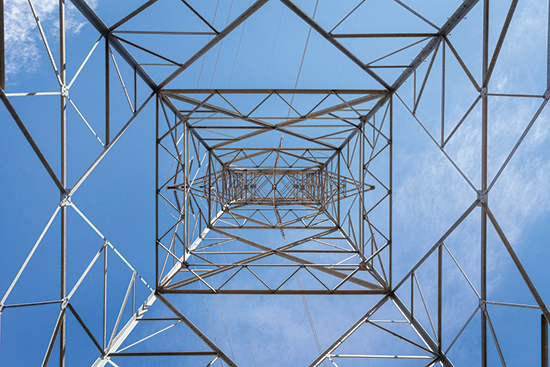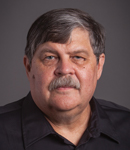Since the beginning of 2018, the IEEE has created or revised and approved more than 200 standards that impact the electric grid. From very specialized standards on items like how to measure temperature rise in a transformer to broad standards like requirements for interconnecting generation and storage, the IEEE standards have an impact on the future of the grid.

IEEE 2030.5, the IEEE Standard for Smart Energy Profile Application Protocol, lays out a protocol that will provide a common way and data dictionary for talking to devices in the internet of things. This will mean that if the standard is followed, the number of protocol translators and interfaces required to talk to different manufacturers’ devices will fall, and the ease of adding new devices and new manufacturers to the system will have a lower cost.
IEEE 1547-2018, the IEEE Standard for Interconnection and Interoperability of Distributed Energy Resources with Associated Electric Power Systems Interfaces, will have an even greater impact. The old version of the standard did not allow for changing power angles, monitoring operation, or allowing ride through. Germany spent more than 3 billion euros to change inverters, due to the hard-wired settings in the inverters that were installed. The rest of the world was faced with either replacing their inverters when they hit 10-25 percent of power coming from inverters or putting a hard limit on inverter-based resources. With the update to 1547, settings can be adjusted after installation, meaning more inverter-based resources can operate efficiently and be installed. In the United States, 1547 made it feasible for the Federal Energy Regulatory Commission (FERC) to release new orders like FERC-841 and 842.
IEEE 1052, the IEEE Draft Guide for the Functional Specifications for Transmission Static Synchronous Compensator (STATCOM) Systems will help keep the transmission system capacity at current levels as current central stations are decommissioned. This means the current investment in transmission will continue to retain its capacity and value even when the facilities the system was originally designed for are decommissioned.
IEEE 1159, the IEEE Recommended Practice for Monitoring Electric Power Quality, provides guidance for — as the name indicates — monitoring power quality. With increases in the amount of power-sensitive equipment in communications systems, manufacturing plants and hospitals, this standard provides the means and methods for monitoring the quality of the power received by these facilities. With that monitoring in place, the effort to minimize power quality issues can be focused on locations that need it and the records of the issues can be analyzed without having to spend large amounts of time hunting for the problem and localizing it.
IEEE 1071, the IEEE Approved Draft Application Guide for an Engineered Restoration Program for Failed Transmission Structures, provides a method for rehabilitation of transmission towers and other structures. With the majority of the transmission system built from the 1960s to the 1980s, more structures are showing signs of deterioration. This guide helps maintenance workers restore the structures to improve integrity and increase the resiliency of the transmission system, without requiring massive rebuilding programs.
As students are sent to work from home via the internet, IEEE 1222 IEEE Approved Draft Standard for Testing and Performance for All-Dielectric Self-Supporting (ADSS) Fiber Optic Cable for Use on Electric Utility Power Lines, sets up a common testing procedure for the lowest cost way to deploy communications for the electric grid and potential middle mile use for rural and low-income community broadband. While the broadband issues cannot be solved overnight, this standard makes it faster and easier to deploy over the next few years.
IEEE 1234, the IEEE Guide for Fault-Locating Techniques on Shielded Power Cable Systems, provides a guide to finding the location of a fault on some underground systems, and as the power system moves to more and more underground service, locating breaks in the cable faster means that service can be restored faster and crews can deal with more problems in a day. With less digging required to identify breaks, property restoration can be achieved faster.
IEEE 1307, the IEEE Standard for Fall Protection for Electric Utility Transmission and Distribution on Poles and Structures, is a result of large hurricane events and other disaster incidents. The standard helps minimize hazards to people and buildings from falling lines. While it was in the works long before the fire issues that have made news recently, much of the standard is now being directly applied to areas where fires are an issue. This standard offers guidance for any utility to build a better grid.
Some of the standards — including IEEE 1578 (IEEE Approved Draft Recommended Practice for Stationary Battery Electrolyte Spill Containment and Management), IEEE 1657 (IEEE Recommended Practice for Personnel Qualifications for Installation and Maintenance of Stationary Batteries), and IEEE 1584 (IEEE Guide for Performing Arc-Flash Hazard Calculations) — deal with reducing hazards, both for the personnel working on equipment and for the general public.
The IEEE 1609 series deals with wireless communications infrastructure to vehicles and provides the support for wireless communications for charging, autonomous vehicles and road hazards. This series of standards will mean that a communications system built to these standards will communicate with all the vehicles that adhere to these standards, instead of manufacturer-specific infrastructure needing to be built for each and every manufacturer’s vehicles. The reality of 5G is that each major carrier will build its own network in the urban areas, meaning a large number of antennas. For each automotive manufacture to build infrastructure on top of the 5G systems would have been impossible. The other issue is that having vehicles from different manufacturers not able to communicate with each other would have had profound safety issues. As utilities replace their fleets or install public chargers, this is a series of standards to watch.
IEEE 1889, the IEEE Guide for Evaluating and Testing the Electrical Performance of Energy Saving Devices, offers a standardized method for determining how these devices are making it easier to create new EnergyStar requirements in the U.S. and similar standards elsewhere. As laboratories use this as the basis for their testing standards, there will be a single benchmark from this standard that will be used to approve those tests and the instruments they use. This means that apples-to-apples testing will be possible.
There are more than 200 additional standards, either with an IEEE standards number or an ANSI standards number, that were facilitated by the volunteers from IEEE. Most of those volunteers are supported by their employers and work on one of the hundreds of IEEE working groups, taking their knowledge of the industry and putting it into documents that provide guidance to the electric power industry. As many of these volunteers retire, it is important for the future of the industry to identify and encourage members in younger generations to step up and help develop standards that will take the industry into the future. These standards make it possible to develop, maintain and operate the grid in a safe and effective manner. As more energy sources are transitioned to the grid, it will become more and more important to develop standards like these to provide low-cost and reliable energy to all.
 Doug Houseman is an industry leader in grid modernization with more than 40 years of experience in the energy and utility industry. He is a principal consultant with 1898 & Co., a business, technology and security solutions consultancy, which is part of Burns & McDonnell. Houseman is chair of the IEEE PES Intelligent Grid and Emerging Technologies Coordinating Committee and a former member of the GridWise Architecture Council.
Doug Houseman is an industry leader in grid modernization with more than 40 years of experience in the energy and utility industry. He is a principal consultant with 1898 & Co., a business, technology and security solutions consultancy, which is part of Burns & McDonnell. Houseman is chair of the IEEE PES Intelligent Grid and Emerging Technologies Coordinating Committee and a former member of the GridWise Architecture Council.







